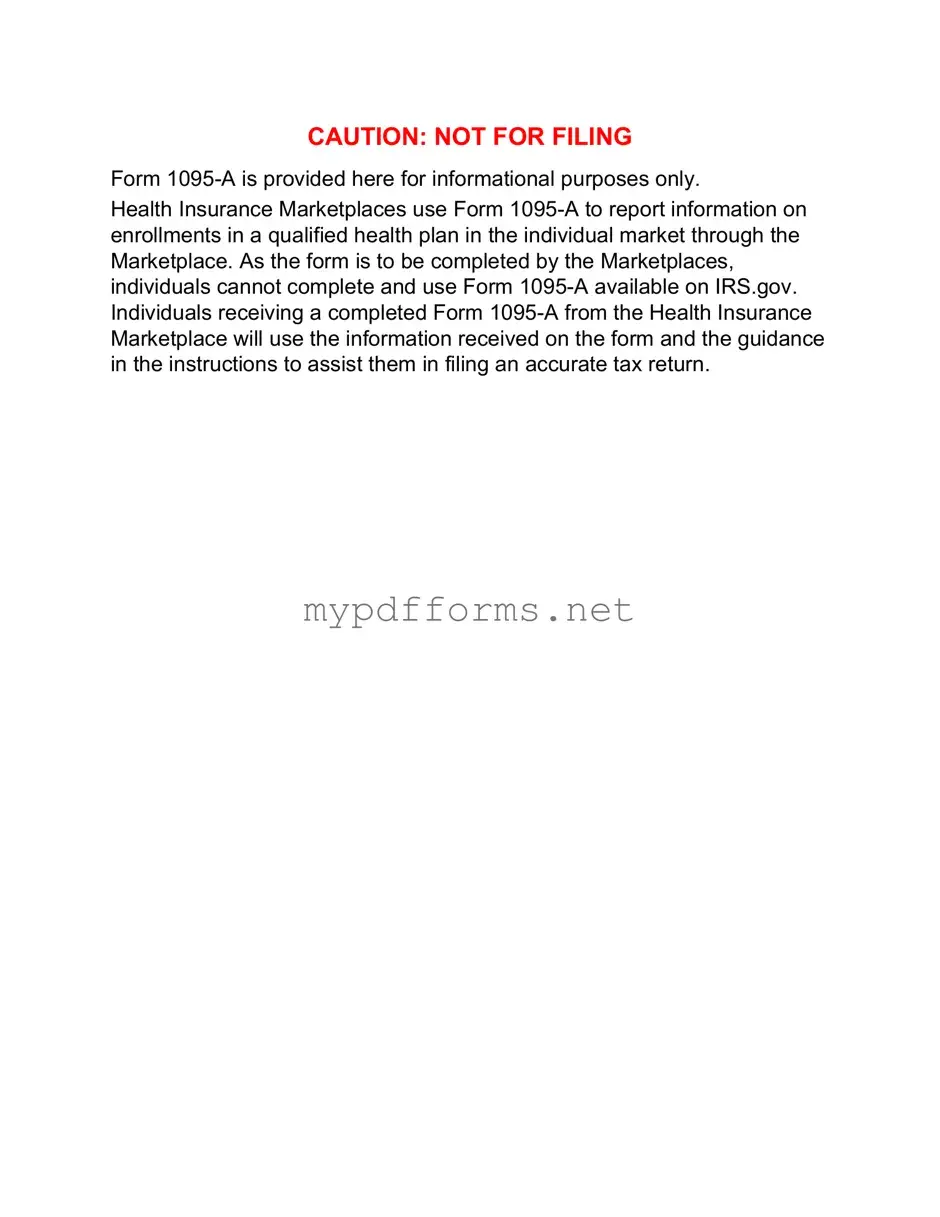The IRS Form 1095-A, also known as the Health Insurance Marketplace Statement, is primarily used to report information about health coverage obtained through the Health Insurance Marketplace. This form provides essential details about the coverage, including who was covered, the length of coverage, and any premium tax credits received. Similar to this form, the IRS Form 1095-B serves as a record of minimum essential coverage. Insurers or health care providers issue this form to individuals who have health coverage that meets the Affordable Care Act's requirements. It indicates the months during which the individual was covered, thus helping taxpayers verify their health coverage status when filing taxes.
Another related document is the IRS Form 1095-C, which is used by applicable large employers to report health coverage offered to employees. This form provides information about the health insurance plans offered, the employee’s enrollment status, and whether the coverage meets the minimum essential coverage requirements. Unlike the 1095-A, which focuses on coverage obtained through the Marketplace, the 1095-C is specifically for employer-sponsored insurance, making it crucial for employees to understand their health benefits and tax implications.
The IRS Form W-2 is another important document that shares similarities with the 1095-A. While the W-2 reports an employee's annual wages and the taxes withheld, it can also indicate whether the employer offered health insurance coverage. For employees, the W-2 provides a comprehensive view of their income and benefits, making it a critical document when filing taxes. Although it does not detail the specifics of health coverage, it can still play a role in determining eligibility for certain tax credits related to health insurance.
Form 1099-MISC is also relevant in this context, particularly for self-employed individuals or freelancers. This form reports income received from various sources, including payments for health insurance premiums. While it does not directly relate to health coverage details like the 1095-A, it can impact an individual's overall tax situation, especially when claiming deductions for health expenses or premiums paid. Understanding how this form interacts with health insurance reporting is essential for accurate tax filings.
Another document that shares relevance is the IRS Form 8962, which is used to claim the Premium Tax Credit. This form requires information from the 1095-A to calculate the credit accurately. Taxpayers must complete the 8962 if they received premium tax credits to ensure they are claiming the correct amount. This connection highlights the importance of the 1095-A in determining eligibility for financial assistance when purchasing health insurance through the Marketplace.
The IRS Form 8889 is significant for individuals with Health Savings Accounts (HSAs). While it does not directly relate to the 1095-A, it requires information about health coverage, particularly if the individual is claiming deductions for HSA contributions. Understanding the interplay between the 8889 and the 1095-A can help taxpayers maximize their health-related tax benefits, especially if they have both types of coverage.
The California Motorcycle Bill of Sale form is a legal document that records the sale and purchase of a motorcycle in the state of California. It acts as proof of ownership transfer from the seller to the buyer. Ensuring all details are accurately recorded on this form is essential for both parties involved in the transaction. For those interested, you can open the pdf for further information.
Form 1040, the individual income tax return, is another document that interacts with the 1095-A. Taxpayers use this form to report their total income, deductions, and credits, including those related to health insurance. The information on the 1095-A helps determine whether an individual qualifies for certain credits or if they owe a penalty for not having coverage. Thus, the 1040 serves as the final piece of the puzzle when it comes to reporting health coverage and associated tax obligations.
Finally, the Form 4506-T, Request for Transcript of Tax Return, can be relevant for individuals needing to verify their tax information, including health coverage. While not a direct reporting form like the 1095-A, it allows taxpayers to obtain copies of their previous tax returns, which may include information about health insurance coverage and any credits claimed. This form can be particularly useful for individuals who need to provide proof of coverage for various purposes, including loan applications or financial aid for education.
